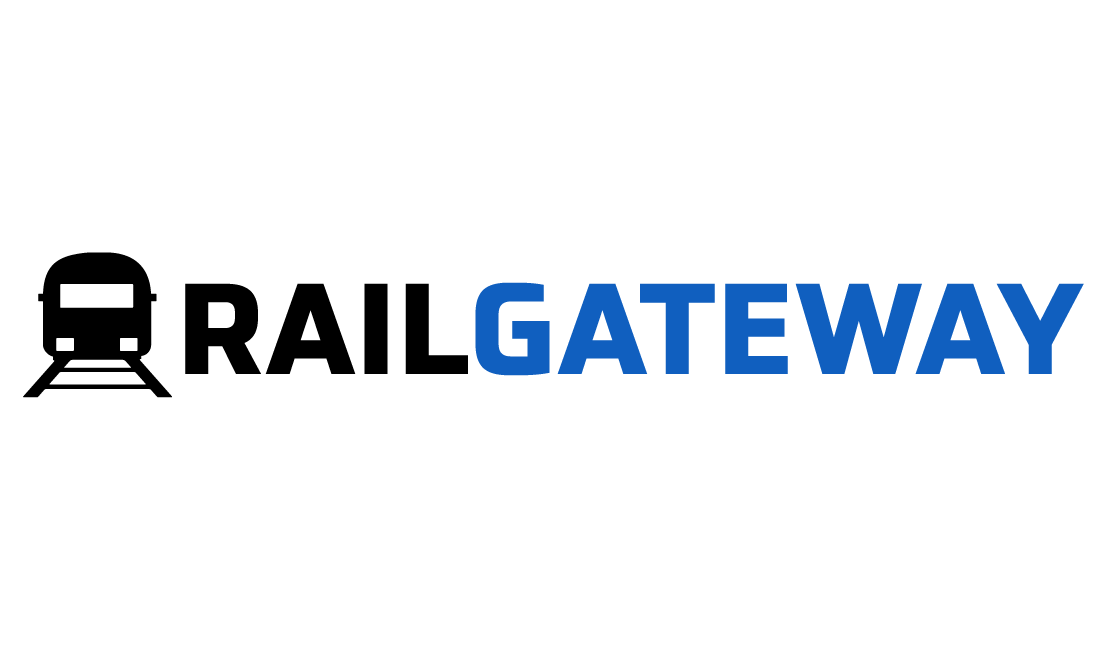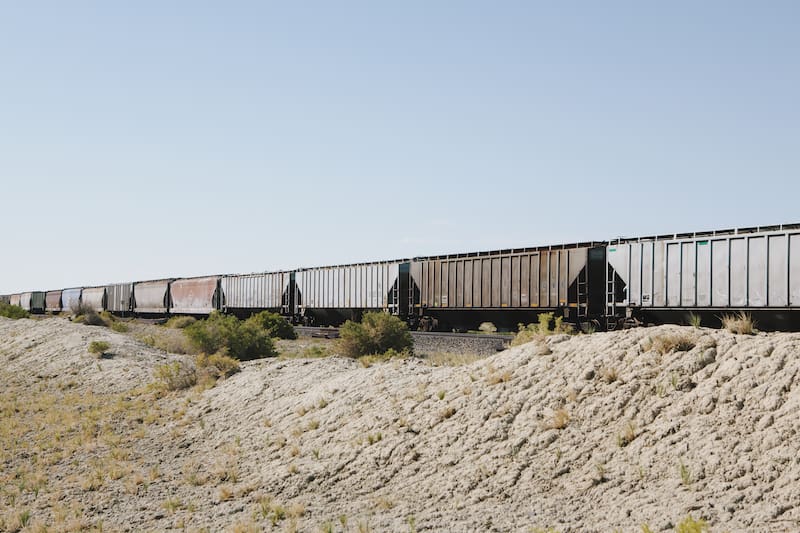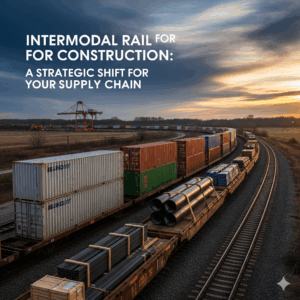Intermodal Transportation Trends to Look Out For in 2025
In 2025, intermodal transportation trends in Canada are not just evolving – they’re accelerating at full throttle. As the demand for efficient, sustainable, and resilient supply chains grows louder across industries, Canadian businesses are turning to smarter logistics models that blend the best of rail, truck, and port shipping. Intermodal transportation – once considered a niche strategy – has now become a cornerstone of modern freight movement, offering both cost-efficiency and operational agility in an increasingly complex logistics landscape.
The post-pandemic recovery, combined with ongoing economic pressures and environmental mandates, has set the stage for a transformational year in Canadian shipping. From AI-powered route optimization to carbon-neutral rail advancements, intermodal transportation trends are shaping how goods are moved across the country. With strategic investments being made in infrastructure, technology, and sustainability, companies that adapt to these shifts early are positioned to leap ahead of competitors.
But it’s not just about reducing costs anymore. The latest intermodal innovations focus on creating smarter systems, reducing emissions, and boosting end-to-end visibility – essential traits in today’s volatile supply chain environment. These trends are especially critical for industries like automotive, retail, manufacturing, and agriculture, where delays and inefficiencies can cripple profitability.
In this blog, we dive deep into the most impactful intermodal transportation trends driving change across Canada in 2025. Whether you’re a logistics leader, operations executive, or just looking to future-proof your shipping strategy, these insights will help you navigate what’s next. From emerging tech to greener freight solutions, here’s what you need to know to stay ahead of the curve – and keep your freight moving faster, smarter, and more profitably than ever before.

Intermodal Freight Transportation in 2025: A Rising Giant in Global and Canadian Supply Chains
Is intermodal freight transportation on the rise? Not only is it rising – it’s surging, reshaping the very foundation of how goods move across borders, industries, and entire continents. Driven by a perfect storm of economic necessity, environmental urgency, and technological disruption, the intermodal sector is shifting from a cost-saving alternative to a strategic must-have in modern logistics planning.
According to a recent report by Research and Markets, the global intermodal freight transportation market is forecast to grow by $50.45 billion between 2022 and 2026, representing a compound annual growth rate (CAGR) of 6.38%. This upward trend isn’t just global – it’s gaining serious momentum in Canada, where infrastructure investments, trade corridor upgrades, and decarbonization policies are creating fertile ground for intermodal adoption across every major industry sector.
But what’s behind this growth surge? Let’s unpack it:
- Cost Efficiency: As fuel prices and cross-border shipping rates remain volatile, intermodal freight offers a more predictable and budget-friendly alternative by leveraging rail for long hauls and trucks for final-mile delivery. This hybrid model is proving invaluable for businesses managing tight transportation budgets.
- Environmental Pressures: With Canadian regulators and trading partners enforcing stricter emissions standards, shippers are increasingly pressured to cut carbon across the supply chain. Rail transport – significantly more fuel-efficient than over-the-road trucking – has become a cornerstone in sustainable logistics. This is making intermodal shipping not just a preference, but a compliance strategy.
- Infrastructure Modernization: Canada’s major ports (Vancouver, Montreal, Prince Rupert, and Halifax) are doubling down on intermodal terminal enhancements, with expanded rail connectivity, automated cranes, and AI-enabled logistics hubs. These upgrades are making intermodal freight not only faster, but also more reliable and scalable.
- Resilience and Redundancy: The pandemic taught Canadian businesses a harsh lesson about the fragility of traditional supply chains. In response, many are redesigning their logistics models with resilience in mind – diversifying transport modes, building in flexibility, and avoiding bottlenecks. Intermodal transportation trends reflect this push for redundancy and risk mitigation, especially in sectors like retail, manufacturing, and agriculture.
- Technology-Driven Coordination: Digital freight platforms and supply chain visibility tools are removing the silos between shipping modes. Real-time tracking, predictive ETAs, and integrated carrier communication are eliminating the historical pain points of intermodal handoffs. In short, the tech has finally caught up to the model.
Canada in particular is benefitting from its unique geographical advantage. With vast rail networks crisscrossing the country and easy access to both U.S. and Pacific Rim trade routes, Canadian intermodal freight hubs are becoming strategic gateways for global commerce. Add to that the government’s commitment to decarbonizing transportation through initiatives like the National Trade Corridors Fund, and it’s clear the future is multimodal.
So, is intermodal freight transportation rising? Without question. It’s not just a trend – it’s a freight revolution. Canadian companies that recognize and capitalize on these intermodal transportation trends in 2025 are setting themselves up not only to compete – but to dominate – in the next era of logistics.
What does this mean for logistics professionals?
This positive outlook on the intermodal sector presents exciting opportunities for those in the logistics field. With the increasing demand for efficient and cost-effective transportation solutions, intermodal expertise will become a highly sought-after skill set. Here are some potential implications:
- Increased Demand for Intermodal Specialists: As more companies embrace intermodal solutions, the need for professionals with a deep understanding of this transportation method will rise.
- Emerging Career Paths: The growth of the intermodal sector may lead to the creation of new career paths within logistics, specializing in this specific area.
- Focus on Technology Integration: Optimizing intermodal operations will likely require advancements in technology integration, potentially opening up opportunities for professionals with technical backgrounds.
In short, the intermodal business is getting bigger and better. This is great news for people who work in shipping things. If you can learn about and work in this area, you can have a good chance of success.
What’s Trending In Intermodal Transport?
The intermodal freight transportation industry is booming! With the global trade slowdown pushing businesses to explore alternatives, intermodal solutions are gaining significant traction. This trend brings several advantages, including efficiency and cost-effectiveness for moving goods across borders. Let’s delve into the 14 key intermodal transportation trends shaping the future in 2025:
Cross-border Trade Boom
Global trade may be slowing down, but intermodal cross-border trade is picking up the slack. Intermodal transportation offers a perfect solution for these international shipments, providing a cost-effective and efficient way to move goods across borders.
Smart Intermodal Takes Center Stage
Logistics professionals are increasingly embracing “smart” intermodal solutions. These tech-driven tools use data to track shipments, optimize routes and schedules, and ensure smooth communication between different transport modes and terminals. Real-time tracking is one of the intermodal transportation trends, a major benefit of smart intermodal systems.
Automation Takes the Wheel
Automation is making its mark as one of the top intermodal transportation trends. This includes automated loading and unloading systems, yard management tools, and intelligent planning software for optimizing routes. These systems offer significant efficiency gains and cost reductions for logistics companies.
Growing Demand for Intermodal Expertise
The demand for companies specializing in intermodal logistics solutions has grown steadily over the past few years. Many businesses are turning to these experts to manage their intermodal operations, leveraging their expertise in navigating complex supply chains.
Digital Freight Platforms Gain Traction
Digital freight platforms are one of the popular intermodal transportation trends. These platforms offer shippers real-time tracking and greater visibility into their shipments, facilitating streamlined processes, reduced delays, and improved communication across the supply chain.
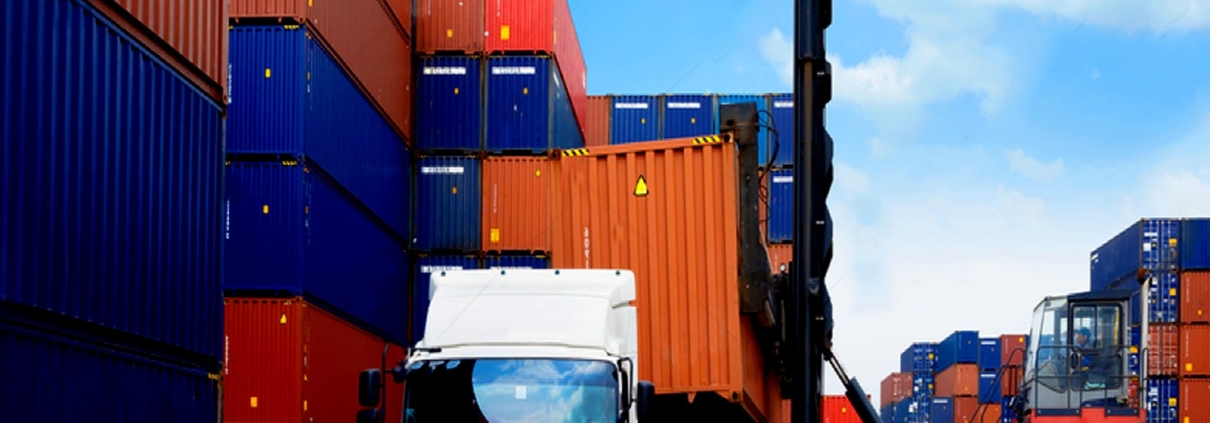
Leaner Intermodal Fleets Emerge
Leaner intermodal fleets, using fewer and lighter weight vehicles, are becoming more popular due to their cost-saving and environmentally friendly aspects. These vehicles require less fuel to operate, leading to reduced operating costs and emissions.
Sustainability Remains a Priority
Sustainability continues to be a driving force in the intermodal transportation trends. Companies are focusing on reducing their carbon footprint through improved efficiency, greener energy usage, and using more fuel-efficient vehicles. Recycling and reuse initiatives are also gaining traction.
Electric Trains on the Horizon
One of the most exciting intermodal transportation trends is the development of battery-electric trains. Intermodal freight companies are racing to bring the first fully electric intermodal train to market, catering to both intercity and intermodal transportation needs. This represents a significant step towards a lower carbon future.
Enhanced Tracking and Visibility
As intermodal shipments rise, outdated tracking systems are becoming obsolete. Electronic scanning technology is becoming more prominent, aiming to make the shipping process faster and more efficient. Real-time tracking options with video and GPS reporting are also evolving to meet growing needs. Intermodal software plays a crucial role here, helping manage load boards, track shipments, update drivers, and offer online customer tracking. Cloud-based solutions are increasingly available for added convenience.
Innovation Breeds New Services
Intermodal transportation providers are actively investing in new technologies to create innovative services. For example, partnerships like the one between CN Rail and Google Cloud are modernizing railway services by offering enhanced customer experiences. Additionally, the adoption of safety technologies like Positive Train Control (PTC) is ushering in a new era of efficiency and safety for railroads.
Port Congestion: A Looming Challenge?
Global freight forwarders are bracing themselves for potential port congestion. However, experts suggest that rising prices and interest rates might slow down consumer demand, leading to a potential decrease in container shipping demand. Despite this, the industry is constantly looking for innovative solutions to address any disruptions.
B2B eCommerce Gains Momentum
B2B eCommerce is making waves as a highly efficient way for companies to connect online. Intermodal B2B eCommerce specifically allows smaller companies to share orders and benefit from bulk purchasing advantages.
Addressing the Driver Shortage
The ongoing truck driver shortage remains a concern within the intermodal industry. An aging workforce and rising costs are contributing factors. This shortage can create challenges in maintaining efficient transportation speeds. Initiatives are needed to attract and retain qualified drivers.
Investment in Warehousing Operations
As intermodal companies expand their services, many are investing in intermodal warehouses to fulfill last-mile delivery demands. This includes significant investments in warehouse infrastructure and technologies like robotics, automation, AI, and machine learning to increase efficiency. Improved warehouse operations lead to faster delivery times and enhanced customer service.
In the coming years, we can expect further discussions around warehouse locations, design, technology integrations, and operational strategies to help intermodal companies stay ahead of the curve.
Conclusion: Why Intermodal Transportation Trends in Canada Matter Now More Than Ever
If 2025 has taught us anything, it’s that supply chains can no longer operate on outdated systems, single-mode strategies, or hope alone. Congestion at ports, volatile fuel prices, driver shortages, and mounting pressure to reduce carbon emissions have forced Canadian businesses to rethink how they move freight. In this new environment, the most successful companies won’t be the biggest – they’ll be the most adaptable.
That’s where intermodal transportation enters the picture. The latest intermodal transportation trends in Canada clearly show a massive shift in how businesses approach freight logistics. By integrating rail and truck transportation into a unified, efficient model, companies are gaining better control over their timelines, budgets, and environmental impact. Intermodal is no longer just a cost-cutting measure – it’s a strategic imperative.
Smarter Logistics Through Innovation
Today’s intermodal networks are powered by intelligent routing software, real-time freight tracking, and automation that enables faster transfers and fewer disruptions. With the rise of digital platforms, freight visibility is no longer a luxury – it’s a standard. These innovations are creating more resilient and agile supply chains that are better equipped to handle uncertainty and demand spikes.
Sustainability That Supports Your Bottom Line
Let’s be blunt: the environmental impact of traditional over-the-road shipping is no longer tenable. With rail transport emitting up to 75% fewer greenhouse gases than trucking alone, shifting to intermodal is one of the easiest ways to meet ESG goals without sacrificing performance. The Canadian government’s investment in green transportation infrastructure is only accelerating this shift – and businesses that align early will enjoy both reputational and financial ROI.
Reliability, Resilience, and Reach
Whether you’re moving dry freight, temperature-controlled goods, or large-volume loads, intermodal provides the flexibility and reach that Canadian businesses need to compete nationally and globally. With seamless connectivity across major trade corridors – Toronto to Vancouver, Montreal to Calgary, Winnipeg to the U.S. Midwest – intermodal offers scale without the headache. And in a world where “delayed” has become the default, that’s a serious advantage.
Let RailGateway Help You Lead the Freight Revolution
At RailGateway, we don’t just follow intermodal trends – we help you capitalize on them. Our team has deep expertise in full-load rail shipping, optimized routing, and industry-specific solutions for manufacturers, distributors, and exporters across Canada. We cut through the complexity, reduce your freight spend, and deliver consistent performance no matter what the market throws your way.
We understand that choosing a logistics partner is a strategic decision – not just a transactional one. That’s why we work closely with every client to design intermodal solutions tailored to your specific needs, industry, and growth goals. Whether you’re looking to decarbonize your supply chain, expand into new markets, or build in redundancy to protect against disruption, we can help you get there – faster and smarter.
The Bottom Line?
Intermodal transportation isn’t the future. It’s the now.
And it’s redefining how Canadian companies ship, save, and scale.
If you’re ready to take advantage of the intermodal transportation trends shaping 2025 and beyond, let’s talk.
📦 Get a free quote today and discover how RailGateway can streamline your freight strategy, protect your margins, and move your business forward – one container at a time.
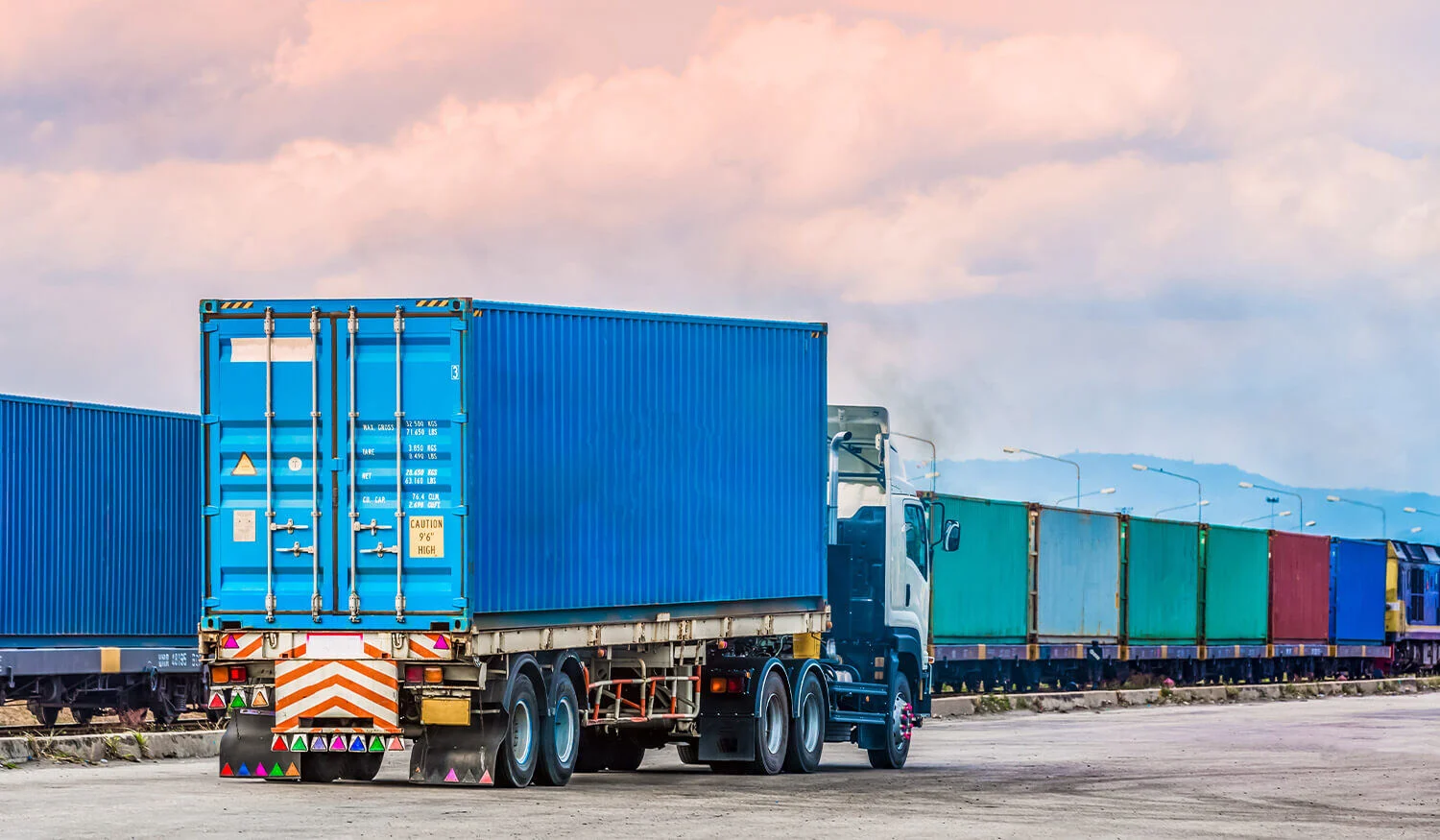
FAQ’s
1. What are the top intermodal transportation trends in Canada for 2025?
The top intermodal transportation trends in Canada for 2025 include increased use of AI in logistics, greener rail options, and more strategic port-rail integrations. These intermodal transportation trends reflect a nationwide push toward sustainability and cost-efficiency. Businesses embracing these changes will gain a competitive edge in Canadian freight logistics.
2. How is technology shaping intermodal transportation trends in Canada?
Technology is a key driver of intermodal transportation trends in Canada, from predictive analytics to IoT-enabled freight tracking. These advancements improve visibility, reduce delays, and support real-time decision-making across multiple transport modes. Tech-forward intermodal strategies are becoming a must for Canadian shippers in 2025.
3. Why are Canadian companies investing more in intermodal transportation?
Canadian businesses are investing in intermodal transportation due to rising fuel costs, increased environmental regulations, and the need for resilient supply chains. Current intermodal transportation trends show a clear shift toward combining rail and truck to balance speed and sustainability. This multi-modal approach helps reduce risks and optimize costs.
4. What role does sustainability play in 2025’s intermodal transportation trends?
Sustainability is at the core of 2025’s intermodal transportation trends in Canada, especially with growing ESG pressures. Rail is being favored over long-haul trucking due to its lower carbon footprint and fuel efficiency. Companies prioritizing greener intermodal solutions are positioning themselves as future-ready logistics leaders.
5. How is the Canadian rail network evolving with intermodal transportation trends?
Canada’s rail infrastructure is adapting to meet the demands of modern intermodal transportation trends, with investments in terminals, automation, and faster container handling. Rail providers are aligning more closely with port authorities and logistics hubs. This transformation is enhancing service reliability and shipment capacity nationwide.
6. What industries are driving intermodal transportation trends in Canada?
Key industries influencing intermodal transportation trends in Canada include automotive, retail, agriculture, and electronics. These sectors depend on fast, scalable, and cost-efficient cross-country logistics. As demands grow, intermodal strategies are helping them meet market needs without compromising on timing or sustainability.
7. Are intermodal transportation trends improving shipping profitability in Canada?
Yes, intermodal transportation trends are driving profitability by lowering freight costs, reducing fuel consumption, and minimizing disruptions. Businesses are increasingly blending truck, rail, and even short-sea shipping to streamline operations. These trends are turning intermodal shipping into a strategic cost-saving tool.
8. How are government policies affecting intermodal transportation trends in Canada?
Canadian government policies are influencing intermodal transportation trends by encouraging carbon reduction, infrastructure investment, and cross-border trade efficiency. Incentives for cleaner rail use and upgraded intermodal hubs are becoming more common. Policy alignment is making intermodal transport more viable for Canadian businesses.
9. What challenges do companies face when adapting to new intermodal transportation trends?
Companies face challenges such as infrastructure limitations, coordination between carriers, and digital integration when adapting to evolving intermodal transportation trends. However, those that invest early in systems and partnerships can turn these challenges into competitive advantages. Staying ahead of trends is key to success in 2025.
10. What’s the future outlook for intermodal transportation trends in Canada?
The future of intermodal transportation trends in Canada points to smarter logistics, wider rail adoption, and greener end-to-end solutions. As automation, data, and emissions regulations reshape shipping, intermodal transport will continue gaining traction. Canadian logistics is moving toward a more integrated and sustainable future.
11. What Is The Intermodal Transportation Strategy?
Intermodal transportation is a strategic approach to moving goods that combines different modes of transport. Unlike traditional methods relying on a single mode, such as trucks or ships, intermodal transportation effectively utilizes multiple options like trucks, trains, ships, and airplanes. This combined approach optimizes efficiency and cost-effectiveness for long-distance shipments.
Additional Resources
Government of Canada – National Trade Corridors Fund
Learn how federal investments are supporting supply chain improvements and intermodal infrastructure across Canada.
Railway Association of Canada – Rail Trends Report
Access industry-wide statistics and insights into how Canada’s rail network is evolving to meet intermodal demands.
Transport Canada – Transportation Data and Statistics
Dive into government data tracking freight volumes, modal share, emissions, and transportation network performance.
CN Intermodal Services Overview
Explore how CN Rail is expanding its intermodal capabilities to support smarter freight movement across North America.
Research and Markets – Global Intermodal Freight Transportation Market Report
Get the global perspective on intermodal freight growth, with projections and trend analysis through 2026.
How We Can Help
For businesses looking to optimize their freight shipping with reliable, efficient, and cost-effective solutions, RailGateway.ca is your trusted partner in intermodal logistics. Whether you’re new to freight trains or want to enhance your existing supply chain, our team of intermodal experts is ready to guide you every step of the way.
Contact RailGateway.ca today for a free quote or to speak directly with one of our experienced intermodal specialists. Let us help you unlock smarter, smoother shipping solutions tailored to your unique needs.
Visit RailGateway.ca or call us to get started on transforming your freight shipping strategy in 2025 and beyond.
